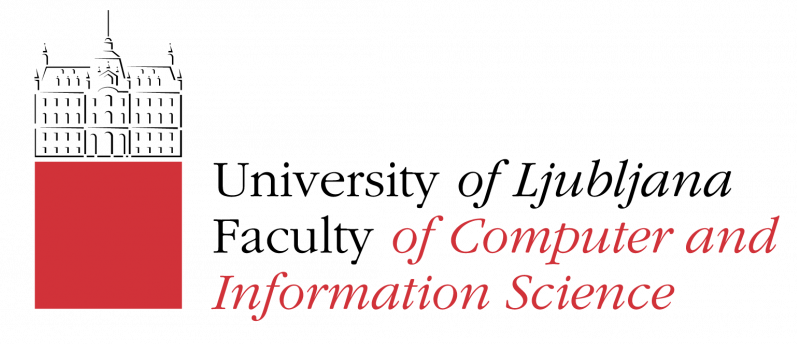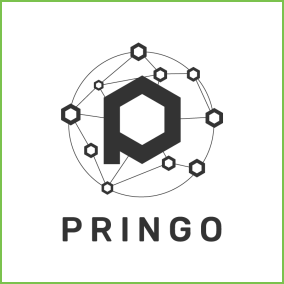
ABOUT THE PROJECT
PRINGO: Private Incentives for Common Goods
Traditional market-based economies have proven their incredible efficiency at funding, producing, and distributing private goods. In parallel, they continue to prove their inefficiency at funding and curating public/common goods, be it forests, wildlife, climate change, social equality, or even peace. The so-called “tragedy of the commons” partly explains the root of this issue by relating it to the massive differences in incentives that drive economy agents in private versus common goods markets.
Leveraging the blockchain capabilities to design new market mechanisms, this project will provide a platform aimed at escaping from this curse in certain digital industry verticals, by realigning incentives in common goods economies so that private agents obtain benefits as significant as in private goods markets if their actions provide real value to the commons.
To limit the scope of the project, we propose an initial focus towards developing a robust link between common goods and the videogames industry. As last year’s boom in Non-Fungible Tokens (NFT) proved, users love owning digital assets (a song, a sword in a videogame), and trading them in decentralized open markets. The rules that govern these markets are public (based on opensource code deployed to a blockchain), allowing entire decentralized economies to be built around them.
The project will exploit recent advances in blockchain technology that allow NFTs to evolve as a function of how they are used by their owners, yet scale to large numbers of Daily Active Users, as provided by the layer-2 technology that Freeverse develops. The platform will allow real-world common goods to be acquired as NFTs in videogames and, most importantly, allow owners to evolve them potentially for profit, increasing their market value if their actions are aligned with the needs of the actual real good, generating a recurrent flow of value back to society.
Motivation for the project:
(coming soon)
Generic use case description:
Alice, loves a Sim City type game, where she builds beautiful towns in an online world, and interacts with towns built by other friends. She loves the feature whereby the game allows her to buy trees corresponding to real, existing, and place them as digital representations (NFT) in her virtual town's surroundings.
With one click in her phone, she often checks the real-life state of her "portfolio" online, where the official issuer of those tree certificates maintains real-time reports. Trees change in real life, they change in-game too.
The game developer provided special in-game benefits to those old-tall trees. She recently sold one of those that she had spent plenty of time customizing to another gamer, for a significantly higher price than she bought it for.
Bob, the gamer who bought this tree, besides using their unlocked benefits in the game, loves the discounts he gets both online and in physical stores, just by easily proving (with one-click) ownership of such common goods in a decentralized manner, without intermediaries.
Now, Alice & Bob see that the amount they've spent is also generating a direct profit for them. To the point that they feel like stakeholders of the game.
More users join the game => more trees a directly bought & more demand is generated for Alice & Bob’s trees => Alice & Bob obtain more profit.
In this loop everyone wins: more revenues are generated for the game publisher, for the common goods curator, and for the most active users.
Essential functionalities:
The main functionalities to be provided by the platform are the following:
Governance Layer
Definition and implementation of a decentralized governance layer that allows to manage and define the rules and criteria that are necessary to comply with to implement initiatives or projects on the platform. The definition of the rules of use must be aligned with the purpose and values of ONTOCHAIN.
Definition and implementation of Governance layer consists of defining the governance of the platform and 4 procedures for decision-making and conflict-resolution and their implementation through smarts contracts.
Web Dashboard
Provide a web environment for potential users of the platform so that they can create NFTs, define properties, as well as update the properties and define the evolution of the NFTs created. The web page will be simple and intuitive for the user and will hide any technical complexity that may exist. From the user perspective, he will only have to focus on the generation and definition of the NFT> properties.
Web marketplace
Provide a Marketplace that allows users of the platform to carry out purchase and sale transactions of the NFTs, in such a way that they allow to maintain the link between the common goods and their evolution in real life.
SDK
Development of integration tools to other projects to use the specific functionalities of the solution such as: create, sell and evolve the properties of the NFTs. These tools will make the components of the PRINGO platform available to third parties to carry out the management layer of the use of the functionalities
How these functionalities can be integrated within the software ecosystem:
The functionalities are integrated into the ONTOCHAIN ecosystem as follows:
Governance Layer
The governance layer implemented through Smart contracts may require specific data on users or projects to verify, in a decentralized manner, if they meet the defined criteria. For this purpose, it may consume services to access certified data, oracles, identification or reputation systems already existing in ONTOCHAIN.
Web Dashboard
The functionalities of the Web Dashboard uses a webapi, so that you can incorporate other functionalities through the protocols of the existing applications.
Web Marketplace
In similar way as the web dashboard, functionalities and / or services that are available in the application protocols can be included. Contribute to the creation of an "as-a-Service" market Providing basic support mechanisms for the NFT transactions.
SDK
Provide access to PRINGO components through core protocols and contribute to add new functionalities to make them available to third-party applications in the ONTOCHAIN ecosystem.
Gap being addressed:
The proposal provides a solution that allows nongovernmental organizations to reduce and maximize the financing of their projects and increase the trust and commitment percentage of their donors.
By making it available, via simple APIs/SDKs and Web Dashboards, to all the required parties an NFT-focused Layer 2 capable of evolving assets in a fully certified manner, there is a chance to align private profit with Common Goods benefit. The combination of i) extremely low gas usage (due to the use of a Layer 2), ii) ease of use, iii) possibility of paying as usual, with credit cards, mobile, etc. in FIAT, iv) trust derived from the underlying blockchain ‘glue’ and related open-source components, will provide a chance to reach mainstream and onboard large social groups that are still far from becoming blockchain users. They will perhaps start tasting the meaning of self-sovereignty by owning, perhaps unawarely, digital representations of Common Goods that they care for, or have fun with.
The platform will not only be able to generate more efficient and sustainable economic models for NGOs, but it will also provide added value, differentiation, and new business models to fully for-profit industries, such as the videogame industry, where the focus will be set in the initial proof of concept.
The platform offers the ONTOCHAIN ecosystem an infrastructure that allows the validation of new economic models and cases of NGO's, at the time that approves the sector: Social Impact and Common Goods to a market with great potential for growth as is the gaming dels d'un first moment.
Expected benefits achieved with the novel technology building blocks:
- Scalability & Evolution: The throughput of current blockchains is not enough to support millions of Daily Active Users with constantly evolving NFTs. Note that taking evolution seriously requires being able to certify on-chain the entire history of every asset, unlike the current ERC721 standard which relies on an off-chain link to, typically, privately owned servers. The use of Freeverse’s dedicated Layer 2 technology will provide a unique opportunity to become an early adopter and start exploiting these new capabilities in the field of common goods curation.
- Mainstream Adoption: One of the main drawbacks of crypto-based projects is the requirement that their users go through complicated processes of obtaining and managing cryptocurrencies. In this project, all asset transfers will be carried on in FIAT currencies (Euros, Dollars, etc.), using state of the art technology that does not require intermediate exchanges to crypto, and EUconforming KYC standards. In other words, users of this platform will be allowed to pay as usual (credit card, mobile payments, etc).
Potential demonstration scenario:
The platform will consist of a set of smart contracts deployed on a low-environmental-impact blockchain, alongside nodes for the corresponding Living-NFT Layer 2, together with a set of tools to facilitate interaction/integration to different actors.
User Typology
- Common goods curator ( Tool : Easy to use webbased dashboard to create and update Living NFTs.)
- Game developer ( Tool : Cloud API to be called from game servers in a fully automated manner, read/create/evolve NFTs.) 7
- User/Gamer/Owner ( Tool : Marketplace for trading, with fees set by goods curator )
- Other blockchain Decentralized Apps ( Tool : Smart contracts API)
- Governance ( Tool : Dedicated smart contracts and Web-based portal)
The outcome of the proof of concept will be a platform providing the tools indicated above, with validation from:
- One initial user from the common goods side (Plant-for-the-Planet Spain).
- One from the videogame industry side (The Breach),
- And a few dozen gamers (mostly developers of this project) using a basic game prototype.
In this sense, by the end of the project, the platform will be fully deployed and operational, ready to accept clients on both the common goods and the videogame sides.
PROJECT OUTCOMES
Blockchain-based platform that enables applications to easily design economies where private incentives are aligned with common good incentives.
We propose an initial focus towards developing a robust link between common goods and the video games industry. The platform will allow any common goods organization to easily introduce digital representations of the goods they curate, in the form of NFTs. With blockchain decentralized trust mediating, any video game developer that desires will then be able to easily allow their gamers to use the NFTs they own in their games. Being blockchain based, all NFTs will be freely tradeable in worldwide liquid 2nd-hand marketplaces.
Traditional market-based economies have proven their incredible efficiency at funding, producing, and distributing private goods. In parallel, they continue to prove their inefficiency at funding and curating public/common goods, be it forests, wildlife, climate change, social equality, or even peace. The so-called “tragedy of the commons” partly explains the root of this issue by relating it to the massive differences in incentives that drive economic agents in private versus common goods markets.
Repositories & Documentation:
Backend: https://github.com/ONTOCHAIN/PRINGO-backend
Frontend: https://github.com/ONTOCHAIN/PRINGO-frontend
SDK: https://github.com/ONTOCHAIN/PRINGO-sdk
Currently open to the ONTOCHAIN community only. Reach out if you need access.
More details:
Customer engagement
To provide a platform, easy to use for common goods curators and videogame developers, whereby gamers can obtain direct profit from improvements of the real curated goods.
Players can sell NFTs on the marketplace, if the NFT has increased in value, other players will be willing to purchase it at a higher price, thus making a profit.
This is intended to significantly improve the financing of the commons.
Monetization
The Freeverse framework is available as software-as-a-service (SaaS). The technology is responsible for the security of the Living Assets platform.
Common goods organizations generate revenues via direct sales of digital NFTs that represent their curated goods, via fees in the 2nd hand market, they boost long-term attention by evolving the NFT according to real evolution and, finally, they are able to reach a young population via a language they know well: videogame
NFTs are traded in marketplaces for real money.
The owner of the NFTs obtains direct profit if curated good improves and Common Goods curator obtain a recurring revenue towards curated good.
Use case Scenario
ROLES:
-
Common good curator - CGC
-
Video game user - VGU
-
Videogame developer - VGD
-
Governance stakeholders = VGDs + CGCs - GSH
Scenario 1: Game users purchase virtual assets representing real world objects - ROL VGU
Purchase virtual assets (NFTs) representing real world trees and place them as digital representations in the videogame virtual town's surroundings.
-
Description: According to the dynamics of the game, a player desires to purchase an NFT that represents a common good in the real world in order to play and successfully achieve the challenges set before him. The gamer will be able to buy some of the NFTs that are available on the market, which can easily be used in the video game.
-
Goal: Allow a player to acquire an NFT, which is created by the common goods curator so that it can be used in the video game.
Enable the owner of the NFT (gamer) to use the features and properties of the NFT to interact in the video game and successfully achieve the challenges defined.
Ensure that the link between the common goods and its real-life evolution is maintained.
Ensure a marketplace for trading, with fees set by the common goods curator.
Scenario 2: Game users check real world objects represented by their NFTs current status - ROL VGU
The owners of the virtual assets (NFT), check the real-life state of their "portfolio" online.
-
Description: Any game user will be allowed to get curated information about the status of their NFTs.
-
Goal: To provide the ability for a game user to realize that there exists a correlation between a NFT and the real-world object status. This correlation should be based on a defined set of rules originally designed to align common goods improvements with in-game performance. At the same time, the game user will be aware that the virtual asset (NFT) potentially increases its market value accordingly.
Scenario 3: Game user sells an NFT to another game user - ROL VGU
The owner of the NFTs wishes to sell one of them, which he has spent a lot of time customising and playing with to improve its performance, to another gamer. The owner uses a marketplace to carry out sale transactions of the NFT.
-
Description: The sale of the NFT allows the owner to obtain a direct profit, but at the same time be aware that part of his profit will go directly to the Common Goods Curator to the continuation of the project associated with the NFT. Amount of profit that will be transferred to the original issuer (common goods curator) should be specified in the original issue proposal rules document,
-
Goal: Allow the game users to make profit by selling their NFTs in a secondary marketplace, increase game engagement and at the same time transfer automatically some of this profit to the original issuer to allow the common good curators to keep activities regarding this real-world good.
Scenario 4: Game user obtains in-game benefits associated with owned NFTs - ROL VGU
A player wishes to purchase a NFT, which is linked to a real asset. The use of this NFT allows him to use it in the video game and take advantage of its benefits to achieve challenges and participate in defined missions in the video game, as well as, to take advantage of its features to unlock unique customisations and access to certain resources. The new owner of the NFT will be aware that the purchase of the NFT, part of the purchase value goes to the common goods curator, thus enabling to obtain enhanced funding for the continuation of the project associated with the NFT.
-
Description: Ownership of NFTs reflects several game aspects like quantitative in-game performance, access to exclusive expansions and also enhanced user cooperation mechanisms.
-
Goal: To increase in-game experience satisfaction and engagement. At the same time, be able to make users aware of what kind of activities is carrying out the common good curators that originally issued the NFTs and keep users interested in the real-world objects that represent progress.
Scenario 5: Video game users spend time playing, allocating resources, buying other assets to achieve the challenges. - ROL VGU
The player spends time playing, invests resources in the video game, acquires or buys assets to play in the video game. The incentive mechanism designed by the video game company has defined rules to reward the level of involvement and collaboration in the video game.
-
Description: The dynamics of the video game have definite mechanics that require player time and resources to participate in the challenges or quests of the video game. Because each player has a different level of engagement, the rules set in the video game allow you to reward players who have a more active participation. These incentives improve the skills or status of the player or his assets according to measurable parameters such as: playing time, commitment to the challenges associated with common goods organizations, dedication of resources or acquisition of assets to achieve the success of quests or challenges.
-
Goal: Reward and encourage players to continue playing the video game. Align the private incentives of the players, play to have fun and win through the common good, and at the same time play to help, and improve the funding of these organizations.
Scenario 6: Common goods curator generates virtual assets representing real world objects to be sold to game users - ROL CGC
Improving the financing of resources for common/public good organisations.
-
Description: To improve funding, common goods organisations will be able to create a digital representation of their common goods in the form of NFTs to make a profit from their sale.
-
Goal: The platform will allow any common goods organization to easily introduce digital representations of the goods they curate, in the form of NFTs.
Scenario 7: Common goods curator updates NFTs according to real world object status changes - ROL CGC
The official issuer, Common Goods Curator, of these virtual assets (NFT) update their features reflecting changes in the actual physical goods.
-
Description: As common good status changes in the real world, common good curator should be able to update issued NFTs according to some defined set of rules.
-
Goal: To allow the common good curators to reflect real-world changes of their goods into issued NFT evolution.
Scenario 7.b: Bulk update - The commons curator updates NFTs in bulk according to changes in the state of objects in the real world.
Scenario 8: Video game developing companies can issue NFTs linked to a common goods curator funding campaign independent from real-world objects. - ROL VGD
The company that develops the video game requires creating other assets of the video game, with its commitment to the philosophy of collaborating with the common goods organisations in the real world, The video games company participates in improving the financing of the project of the Common Goods Organization by creating independent NFT real world but associated with this organization.
-
Description: According to a collaboration agreement between the video game developer and the organization of the commons, some of the video game's assets, which are unrelated to the real world, the initial ownership of the NFT will be assigned to the organization. These NFTs will be available in the marketplace for any player to purchase.
-
Goal: Provide video game-specific assets that are not linked to the real world and contribute to the financing of common goods organizations by applying the same economic mechanism of the platform.
Scenario 9: Video game developing companies can issue NFTs to goodwill level-up. - ROL VGD
The video game developer has defined a set of NFTs that improve the level and / or skills of the players. These assets will be needed to succeed in some challenges or reduce playing time. Some of the dynamics of the video game are designed to motivate and generate incentives for players to play and evolve in the game. The video game offers players the ability to unlock or acquire certain assets that will allow them to acquire or improve their abilities or skills.
-
Description: In the different scenarios or challenges of the video game, previously defined, it will make available to players specific assets (NFT’s) that will allow them to improve their abilities or level up.
-
Goal: Provide incentives, dynamics for players to keep playing, and more players to join the video game.
Generate more interest in gambling and your commitment to common goods organizations.
Scenario 10: Governance Layer. - ROL GSH
Neutral foundation deploys and bootstraps governance contract representing platform rules onboarding a first set of stakeholders
-
Description: Proposed DAO governance uses a social approach to mitigate many of the common decentralized attacks on anonymous stake-based DAOs. Membership Admission is Permissioned, The new member proposals are only sponsored by current members, hence any member of the DAO should be known by at least one of the existing members to join.
-
Goal: Avoid sybil attacks to the governance by allowing already onboarded members to participate in critical decisions (like new member admission without some previous agreement degree between onboarded parties) that could risk overall motivation goals.
Scenario 10b: Agent Manager
-
Description: Agent manager as request broker to verify who owns the asset and is authorised to make requests for asset property updates.
-
Goal: Check receipt of requests to mint NFTs, as well as modify properties of NFTs.
Check who is the owner of the NFT and whether agent is authorised to perform the operations. If everything is found to be correct, the request is made to Freeverse.
Scenario 10c: Common goods / Videogame companies apply for membership
-
Description: As described in the last use cases, any potential stakeholder interested in a membership can interact with the governance contract in order to apply for a membership.
-
Goal: To provide automatic feedback of new membership application proposals and allow members to vote if they agree upon the application or not.
Scenario 10d: Common goods already onboarded member makes a NFT issue proposal
-
Description: to keep the value of the overall marketplace assets, common good curators need the approval of the different parties supporting the platform.
-
Goal: To prevent a common good curator to issue an unbounded amount of NFTs leading to an inflation dynamic without prior consideration with the rest of common good curators and video-game developing companies.
Scenario 10e: Common goods already onboarded member makes a NFT update proposal
-
Description: Since updating a NFT potentially could modify its value, as mentioned in last use case; rest of the stakeholders of the platform should have a chance to agree/disagree according to common interests.
-
Goal: Ensure there’s a consensus between stakeholders that the update proposal (and potential value increase of the NFT) is according to original rules of the issue proposal.
Scenario 10f: Videogame companies already onboarded member makes a NFT issue proposal.
-
Description: The possibility is offered for video game companies to mint a specific NFT for a video game by submitting a proposal specifying and detailing the criteria for creating new NFTs, their evolution and other features to be approved.
-
Goal: Verify the functioning of the proposal for the creation of new NFTs, according to the existing governance rules.
Scenario 10g: Videogame companies already onboarded member makes a NFT update proposal.
-
Description: The possibility is offered to video game companies to propose changes to their NFTs by submitting a proposal specifying and detailing the criteria for modifying the NFT, and it is approved.
-
Goal: Verify the functionality to create a NFTs updates proposal, in accordance with the existing governance rules.
ONTOCHAIN partners that support the scenario
GIMLY: User login and license verification
MFSSIA: Trustability- and legitimacy traceability evaluation of respective NFTs
GEONTOLOGY: Potential use to verify the actual country of origin of a data portability/sharing request.
ADOS / DART: NFT issuing and updating, apart from the governance layer control, could rely on some additional decentralized oracle system; that maybe ADOS/DART project could provide consisting on an advanced solution for a distributed system of oracles in IoT or broader scenarios.
REPUTABLE: From the governance point of view, also REPUTABLE project ideas and implementation could provide some further insights.
Incorporate a mechanism to accredit the level of reputation, origin and ethical values... of the agents that wish to participate in the P.R.I.N.G.O.
HIBI: Additionally, HIBI project could provide an integration with PRINGO platform’s identtiy system, which potentially could enable the mapping of blockchain keys to eIDAS identities for the purpose of backup and recovery.
NFTWATCH: Through the SDK provided NFTWatch can collect what formats and data are generated on the PRINGO platform
PiSWAP: Applying its mechanisms, PISwap could offer potential users of the platform the information necessary to acquire the NFTs available in the marketplace and help promote the incorporation and participation of new users.
Semantic content and content transfer
NFT properties, which are a digital representation of goods that the common goods curator created.
TEAM
Toni holds a Ph.D. in Theoretical Physics, a Postdoc in String Theory and a Postgrad degree in Blockchain Technology, by the U. Barcelona, the Imperial College of London, and the Polytechnic U. Barcelona, respectively. Toni became co-founder and CTO at ImmSound, the startup that exploited the 3D-Sound technology developed at Barcelona Media. ImmSound was finally acquired by Dolby Laboratories in 2012, and the technology was rebranded to Dolby Atmos. Toni became Director of Research, Advanced Technology Group, at Dolby; for a 7 years period. Author of 25+ patents, he left Dolby in 2019 to co-found Freeverse, where he currently acts as CTO.
Born in Barcelona in 1975, studied computer Systems engineer at the The Facultat d'Informàtica de Barcelona (FIB) and Master of Science – Ms Blockchain Technologies. More than 20 years of experience in management and design in the world of ICT and innovation. Currently I am innovation manager of blockchain technologies and DLT's in the i2CAT foundation since 2018.
Experienced Technical Project Lead, Architect and Developer with a demonstrated history of working in the information technology and services industry. Skilled in Research and Development (R&D). Strong information technology professional with a Master’s Degree in Physics from Universitat de Barcelona and Blockchain Technologies from Universitat Politècnica de Catalunya Talent School.
Born in Lleida in 1964, studied Biology at the University of Barcelona. Involved since 1989 in initiatives related to the institutional strengthening of organizations of the third sector, currently directs Plantfor-the-Planet Spain since 2014.
Has more than 20 years of management experience and more than 12 years in the gaming industry. Over the years Ferran has been the vision holder of multiple projects of diverse nature (game development, eSports or advocacy, among others). Ferran is a passionate gamer, an electric entrepreneur and a people dynamizer.
ENTITIES
Is a non-profit research and innovation centrethat promotes mission-driven R&D activities in advanced digital technologies. The center has more than 15 years of experience pursuing international and local R&D projects in the fields of 5G, IoT, VR and Immersive Technologies, Cybersecurity, Blockchain, AI and Digital Social Innovation.
Fundación Plant-for-the-Planet España
Is an organisation that aims to raise awareness amongst children and adults about the issues of climate change and global justice. The Initiative also works to plant trees and considers this to be both a practical and symbolic action in efforts to reduce the effect of climate change.
Super Teams Mobile S.L. (The Breach Studios)
The Breach Studios is a crowd of 30 seasoned senior video game developers from companies like Ubisoft, Gameloft, King, etc... We have combined this game development experience to create The Breach Studios, a small but very talented team capable of amazing feats. At The Breach Studios we have multiple development teams working on a number of game projects with different target platforms and at different scales. Our main objective is to push the boundaries of already established genres with new and innovative ideas that provide genuine and exciting experiences.
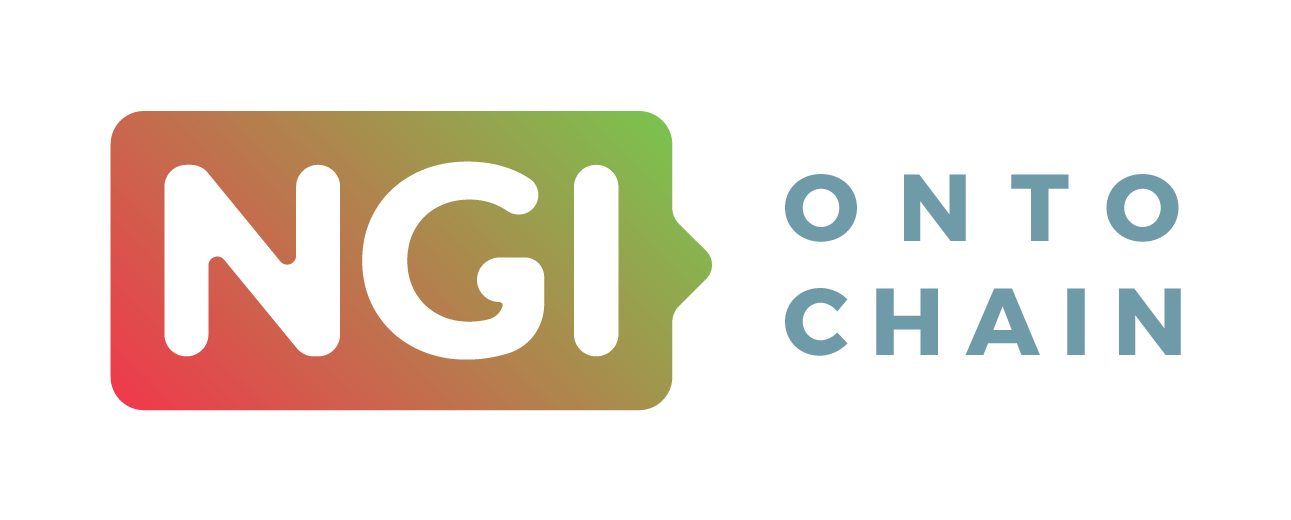
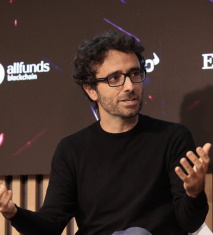
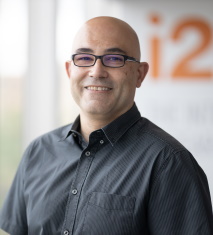
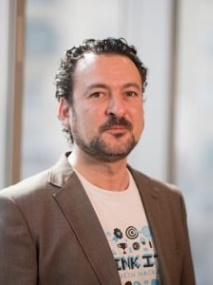
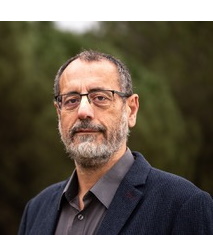

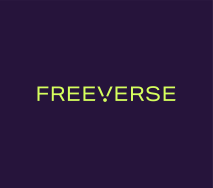
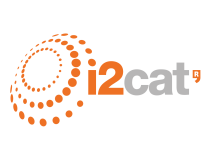
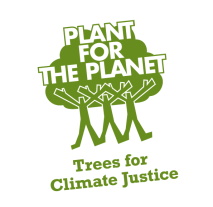
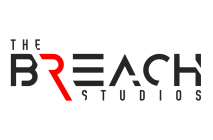
 This project has received funding from the European Union’s Horizon 2020 research and innovation programme under grant agreement No 957338
This project has received funding from the European Union’s Horizon 2020 research and innovation programme under grant agreement No 957338
